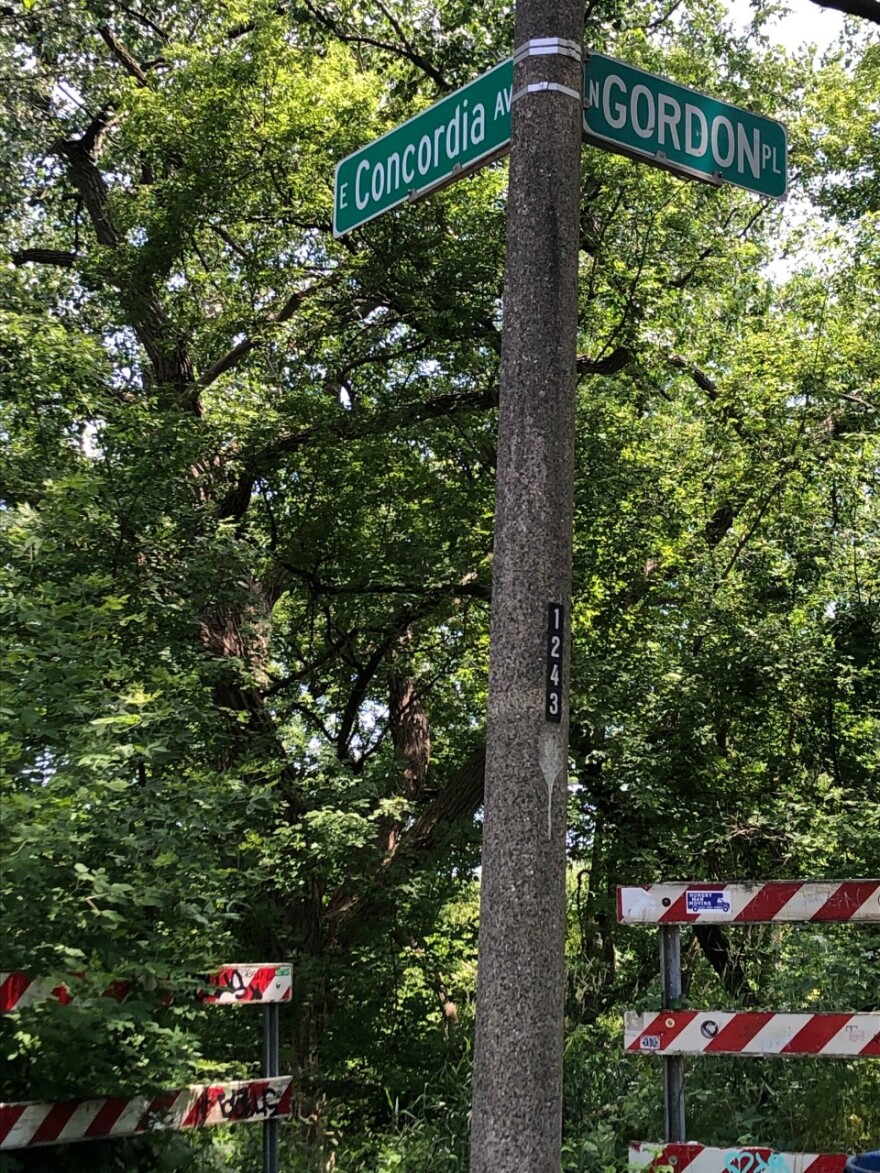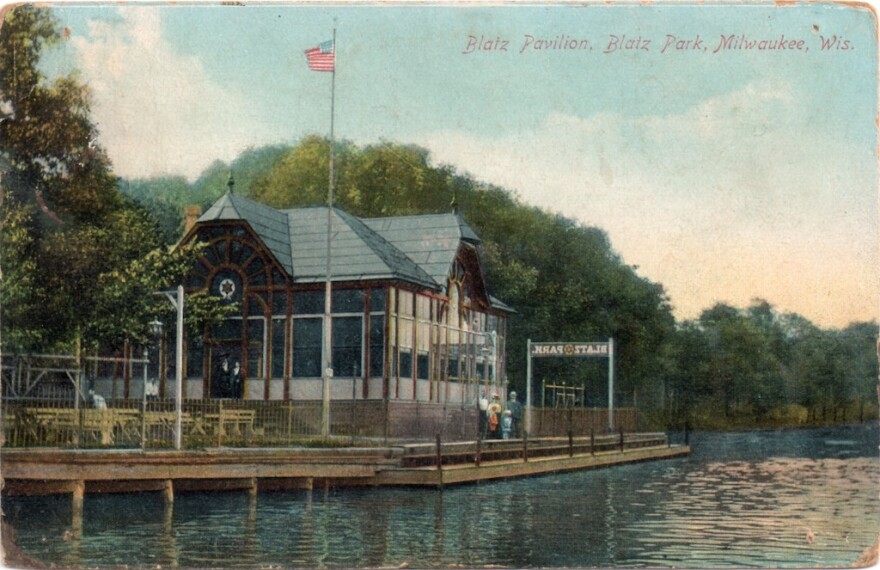Lindsey Goding came upon a mystery bridge above the Milwaukee River in Milwaukee's Riverwest neighborhood when she moved there a number of years ago. So, she reached out to WUWM's Bubbler Talk to learn more.
“We moved in about 2017 so I was exploring the neighborhood and came down this trail over here,” Lindsey explains.

We walked to the spot where East Concordia Avenue disappears into cool lushness along the Milwaukee River.
“And [I] came across this very rather large bridge that doesn’t go anywhere. …It seemed like it should have a purpose,” Lindsey says.
The approximately 250-foot-long concrete bridge with 4.5-foot-tall railings spans a ravine. Views walkers might once have had of the Milwaukee River below have long since been blocked by trees. The bridge’s outer face is obscured by the work of some determined grafitti artists.
The bridge connects two foot paths within the Milwaukee River Greenway, which spans eight miles along its most urban stretch toward downtown Milwaukee.
Lindsey shares her hypothesis about the bridge’s history: “I had heard in the past that there used to be an amusement park on the west side of the river and I thought possibly it’s a remnant. It was my hope that that’s what is was because it’s very interesting and romantic.”
There was once a gathering place at the spot, spilling down to the river’s edge — the Blatz Beer Garden operated by the local brewing company.

The garden opened in 1870. Visitors could walk down into the garden or reach it by steamboat to enjoy a restaurant, live music and, of course, beer.
By the end of World War I, the world had changed and Milwaukee did too, bringing an end to the Blatz Beer Garden era.

The area is now known as Pleasant Valley Park and people love it for hiking, walking dogs and biking.
As for the bridge, the Milwaukee Metropolitan Sewerage District (MMSD) gave it a name — the Auer Aqueduct.
MMSD’s Kathryn Schmitt fills us in. She says the bridge was designed to conceal a 60-inch-wide pipe — a small fraction of a vast sewer system.
“The sewer runs through here underground, and just based on the natural topography of there being a ravine here, we needed to cross and the easiest way to do that was to keep everything at the same level and put a surface on top so people could get across,” Kathryn explains.
The sewer system runs downhill, using gravity to flow to the Jones Island treatment plant.

Kathryn says the aqueduct was put into service in 1918 and was one of the first big projects masterminded by then Chief Engineer T. Chalkley Hatton of what was then called the Sewage Commission of the City of Milwaukee.

Kathryn says eventually, after years of service, the original pipe and bridge needed to be replaced, at— as you’d imagine — a much higher price.
“It was completely redone in 1999. This portion was $10,000 originally, this time it cost $500,000,” she says.
Riverwest resident and blogger of little-known Milwaukee histories, Carl Swanson, joined in our “mystery bridge” conversation.
Carl says normally sewers are hidden away, but the Auer Aqueduct offers the opportunity to see a bit of the infrastructure and to appreciate what it does for the city.
“Milwaukee really did have a problem of absolutely filthy rivers. In the 1870s, the health commissioner found that in times of low water flow, the Milwaukee River was half water and half sewage. About 100 tons of animal and human excrement were dumped into the river every day," he explains. “So it was a huge health issue.”
Carl says the city spent a lot of time and deployed a lot of engineering genius to clean up the mess, resulting in a sewage system he calls a “remarkable civic achievement.”
“The thing that I find interesting about this is that the sewers are something that are hidden away, we don’t really think about them until they go wrong and then it’s utterly horrible,” Carl says.

Was all of this information more than Bubbler Talk question asker Lindsey Goding bargained for when she asked about the bridge to nowhere?
“I appreciate that it’s not just this gross pipe that spans this ravine because this is an area people come to enjoy — a part of nature in the middle of Milwaukee,” she says.
Editor's note: This story was originally published July 16, 2021.
Have a question you'd like WUWM to answer? Submit your query below.
_








